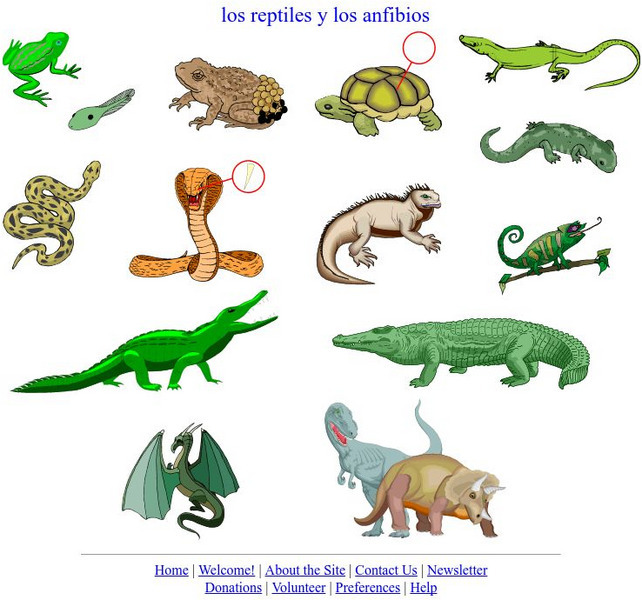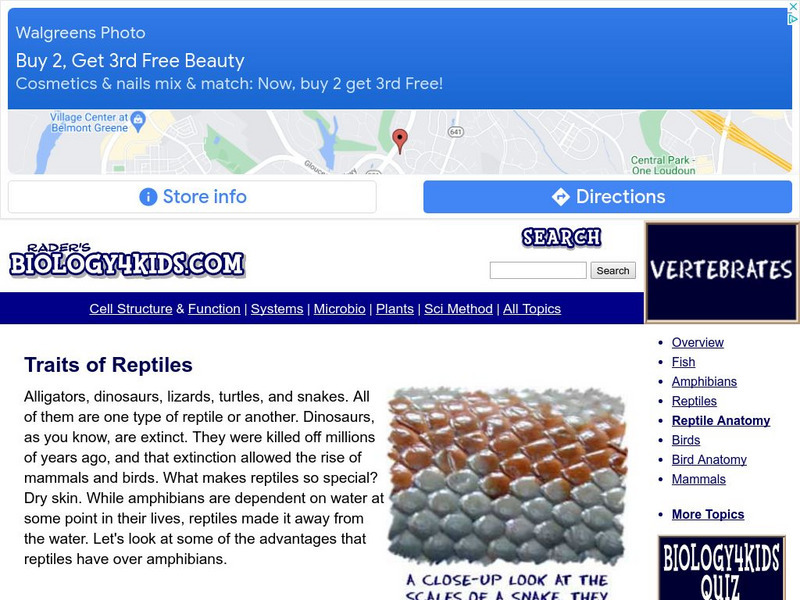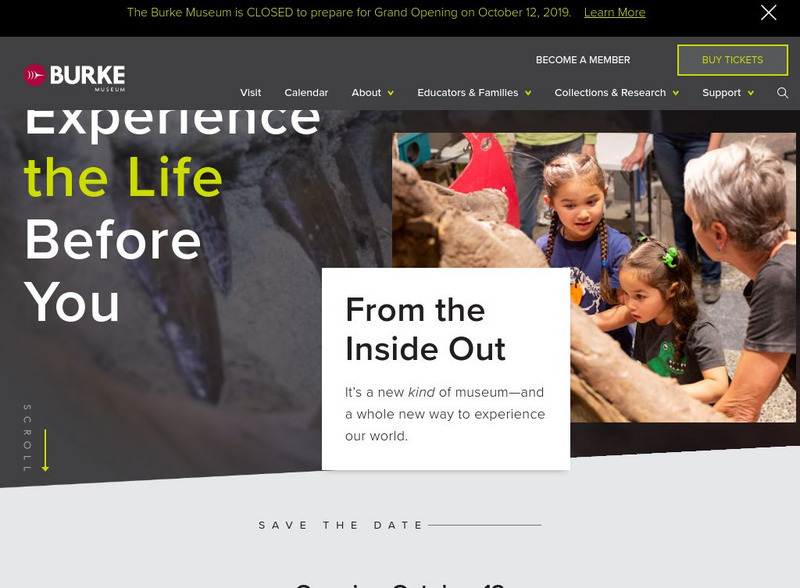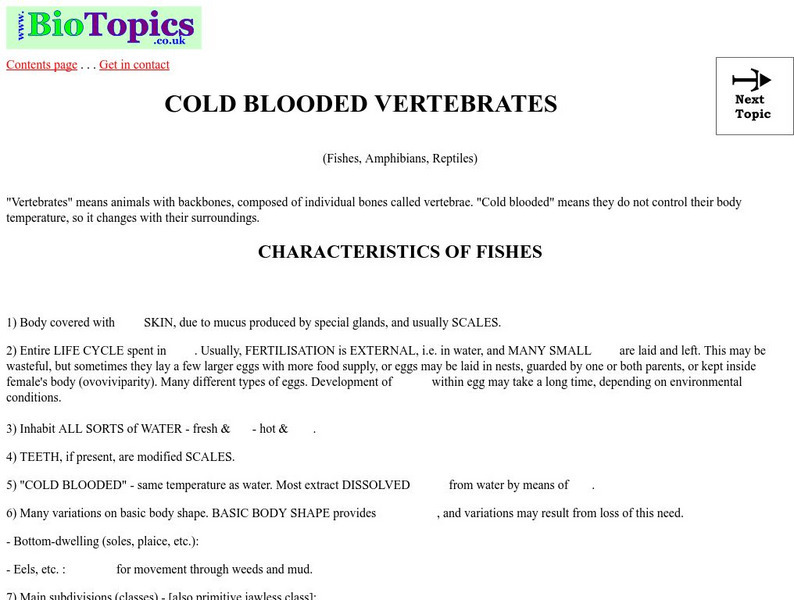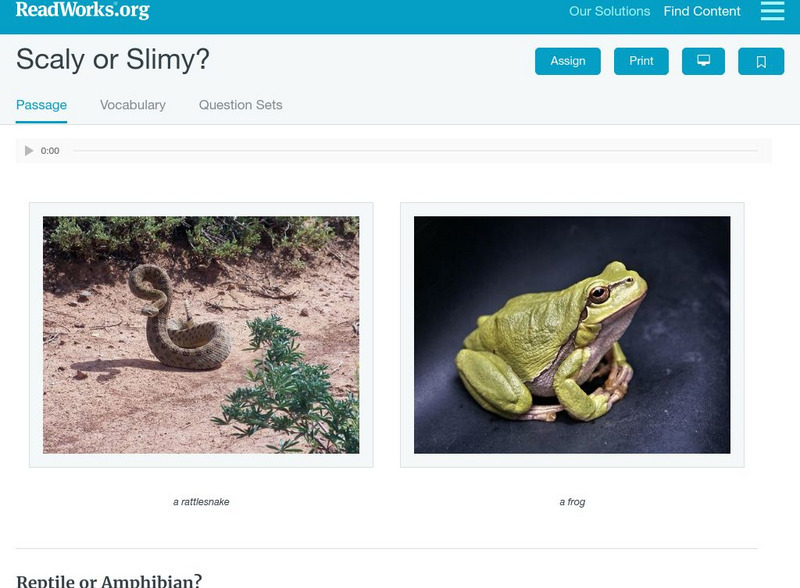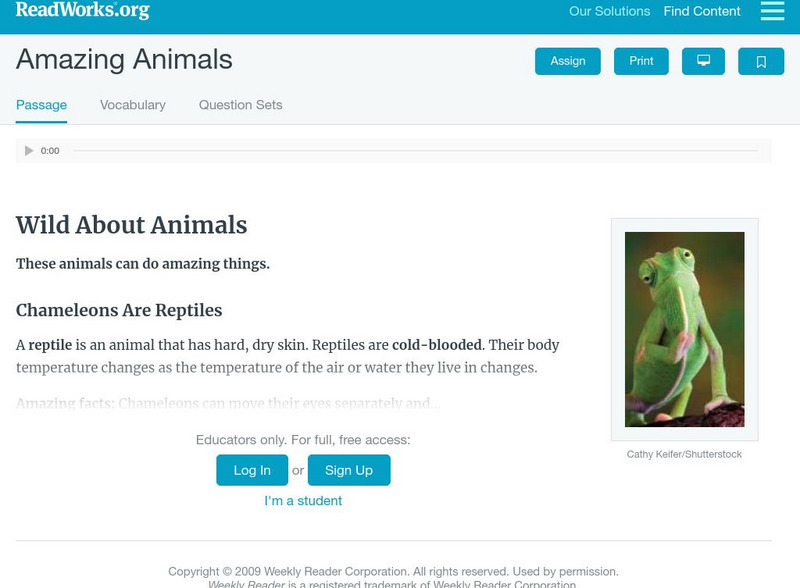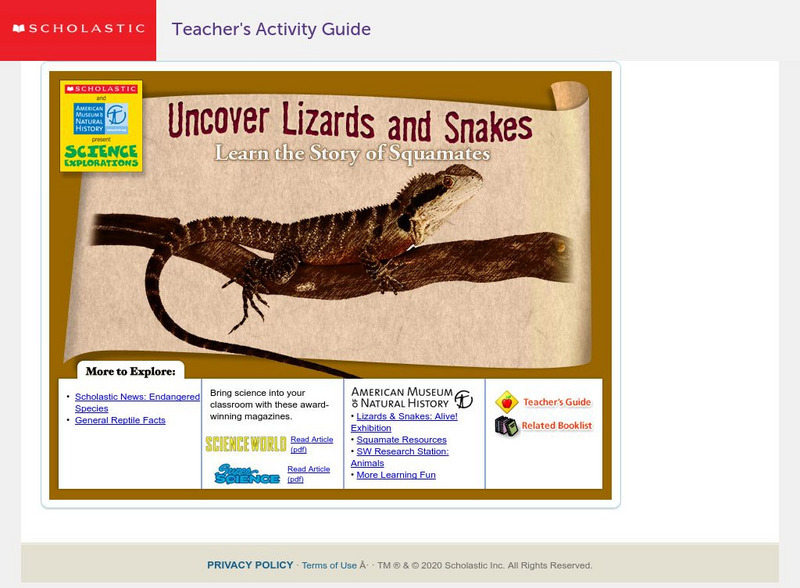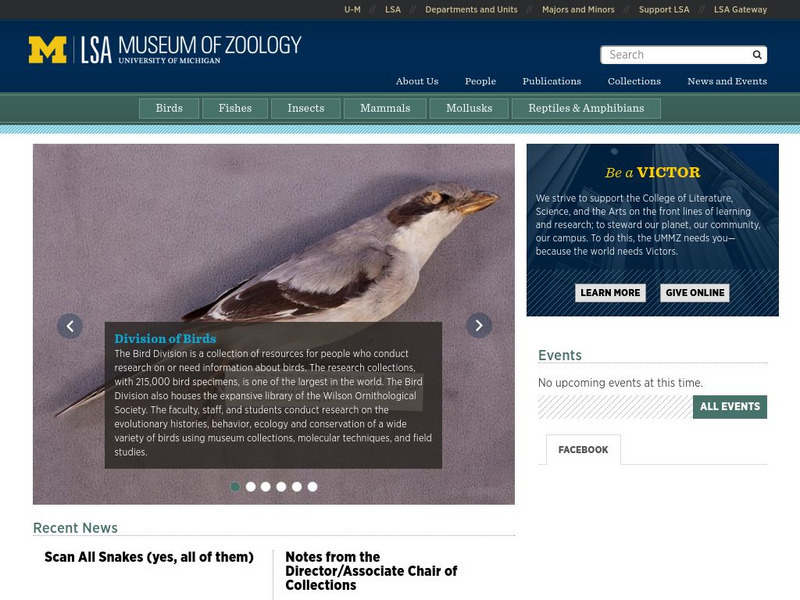Language Guide
Language Guide: Los Reptiles Y Los Anfibios
This vocabulary tutorial would integrate well with a science unit on reptiles and amphibians. Vocabulary can be seen and heard when moving the mouse over each picture.
Natural History Museum
Natural History Museum: Reptiles, Amphibians and Fishes
This online exhibit from the Natural History Museum branches out in many fields to cover the broad topics of reptiles, amphibians and fishes. Thirteen subtopics are provided including several videos and informative articles.
Smithsonian Institution
Smithsonian National Zoo: Reptile Recovery Center
This website presents fact sheets about numerous reptiles. Choose from a pull-down list between snakes, lizards, crocodilians, and turtles. The fact sheets contain information such as taxonomy, distribution and habitat, eating habits,...
Other
International Reptile Conservation Foundation: Reptile Conservation Homepage
Information on the preservation of endangered reptiles and amphibians. Includes video, photos and species descriptions.
Smithsonian Institution
Smithsonian Education: Toads, Turtles, Snakes, Salamanders, and Other Creepers
Smithsonian Education presents Reviled and Revered: Toads, Turtles, Snakes, Salamanders, and Other Creepers and Crawlers. Get the facts about reptiles and amphibians. Learn about their unique characteristics, as well as explore why we...
Other
Sc Reptiles & Amphibians: Eastern & Florida Cottonmouth
South Carolina Reptiles & Amphibians profiles the eastern cottonmouth. A great site for photos-- both the eastern and Florida cottonmouth are pictured.
Biology 4 kids
Biology4 Kids: Traits of Reptiles
Check out the common traits of reptiles that sets them apart from amphibians.
Other
Asp Viper
A series of color photos of the Asp Viper from Amphibians and Reptiles of Europe. Link to related species photos.
ClassFlow
Class Flow: Reptiles and Amphibians
[Free Registration/Login Required] This flipchart provides basic information for the characteristics of reptiles and amphibian and life cycles. Videos show reptiles and amphibians that can cruise through the air, and an alligator mom...
Burke Museum
The Burke Museum of Natural History & Culture
The museum features online quizzes and exhibits like Kennewick Man, "Mammals of Washington," Amphibians and Reptiles of Washington," archeology, and vertebrate paleontology.
Smithsonian Institution
Smithsonian National Zoo
Here is the National Zoological Park right at our fingertips. Students will find many things to explore at this colorful and engaging site. Any study of animals will have a successful start here. Chances are students can catch their...
University of Illinois
University of Illinois Urbana Champaign: About Antarctica: Plate Tectonics
Explanation of why Antarctica has fossils of ferns, amphibians, and reptiles. Gondwanaland is discussed and shown in an interactive map.
Bio Topics
Bio Topics: Cold Blooded Vertebrates
A worksheet regarding cold blooded vertebrates, including fishes, reptiles and amphibians.
Soft Schools
Soft Schools: Animal Classification Game
Decide whether an animal is an amphibian, insect, mammal or reptile with this interactive classification game.
Read Works
Read Works: Scaly or Slimy?
[Free Registration/Login Required] An informational text about the difference between a reptile and an amphibian. A question sheet is available to help students build skills in reading comprehension.
Read Works
Read Works: Amazing Animals
[Free Registration/Login Required] This nonfiction passage discusses distinguishing features of mammals, reptiles, and amphibians. This passage is a stand-alone curricular piece that reinforces essential reading skills and strategies and...
Environmental Education for Kids
Eek!: Environmental Education for Kids
This site provides illustrations, descriptions, and species of amphibians, birds, fish, insects, invertebrates, mammals, reptiles, and endangered species.
Scholastic
Scholastic: Science Explorations: Uncover Lizards and Snakes
An exploration of squamates, or scaled reptiles. Take notes about lizards and snakes using the pdf "Squamate Chart" while viewing a slideshow, investigate the squamate anatomy and how squamates differ from other animals, such as insects...
ClassFlow
Class Flow: Animal Classification
[Free Registration/Login Required] This is a flipchart for first graders to learn about mammals, fish, birds, amphibians and reptiles.
University of Florida
Florida Museum of Natural History: Homepage
This site from the Florida Museum of Natural History gives the current events, information about the museum, exhibits and public programs, research and collections, links, etc. to the Florida Museum of Natural History.
University of Michigan
University of Michigan: Museum of Zoology
See the Museum of Zoology where visitors can explore the museum's resources.
Other
Georgia Perimeter College: The Permian Period
This resource provides basic information of the changes that took place during the Permian period as well as the animals that populated the Earth during this time.
University of Southern California
Structure of Matter: Animals
A slide show that demonstrates the development of physical structure in the animal world, moving from sponges through mammals.
ClassFlow
Class Flow: Animals Grow and Change
[Free Registration/Login Required] This is a 2nd Grade unit on how animals grow and change. It includes information on life cycles of animals and how to classify animals into groups (i.e. mammal, reptile, amphibian, etc.) There is an...
Other popular searches
- Reptiles and Amphibians
- Reptiles Amphibians
- Amphibians and Reptiles K 2
- Reptiles & Amphibians
- Amphibians and Reptiles K
- Reptiles Amphibians Fish
- Compare Reptiles Amphibians
- Amphibians and Reptiles Prek
- Reptiles Amphibians Birds
- Amphibians and Reptiles Unit
- Amphibians and Reptiles Perk
- Amphibians and Reptiles 3 5
